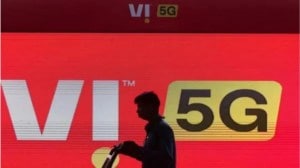Govt mops up R8,500 crore in divestment drive
While foreign investors put Rs 750 crore, anchor investors contributed Rs 850 crore to the ETF, merchant bankers said.
With retail and institutional investors lapping up big-ticket divestment offers, the government on Friday raised around Rs 8,500 crore through an exchange traded fund (ETF) and sale of equity in Axis Bank. The success of the two shares sales would take its divestment receipts much above the Rs 16,000 crore target set for the year.
The government attracted bids worth around Rs 4,000 crore for selling partial stakes in 10 state-owned companies via an ETF operated by Goldman Sachs Asset Management Company. The Central Public Sector Enterprises ETF, which mainly targeted retail and institutional investors, was originally aimed to raise Rs 3,000 crore but managed to attract Rs 1,000 crore more.
While foreign investors put Rs 750 crore, anchor investors contributed Rs 850 crore to the ETF, merchant bankers said. The rest of the money came from retail and high net-worth investors.
The government also sold 9 per cent stake held through Specified Undertaking of UTI (SUUTI) in Axis Bank in a block deal executed after the opening of the market in various trades at an average price of Rs 1,315.13 a share, which is a discount of 3 per cent over Thursday’s closing price. It garnered over Rs 5,550 crore through the sale of 4.2 crore shares in Axis Bank.
SUUTI, formed in 2003 is an offshoot of erstwhile UTI, held 20.72 per cent in Axis Bank. Following Friday’s deal, SUUTI’s holding will come down to 11.72 per cent in Axis Bank. Shares of Axis Bank closed 2.69 per cent higher at Rs 1,393.40 on the BSE.
Investment bankers said LIC picked up over 85 lakh shares of Axis Bank at Rs 1,313 each for over Rs 1,100 crore. Global investment banks Citigroup bought 38 lakh shares at Rs 1,316 per share for Rs 503 crore, while Goldman Sachs bought 23.5 lakh shares at Rs 1,323 for Rs 300 crore. Other institutional investors also bought shares in the block deal.
Rs bounces back to 60.89 against $
The rupee on Friday surged 45 paise, its biggest daily gain in two weeks, to end at 60.89 against the US dollar on massive capital inflows linked to the government stake sale in Axis Bank and ETF offering by Goldman Sachs.
After registering its worst loss in two months on Thursday, the rupee’s recovery was also aided by fresh dollar selling by exporters and some banks on the back of a weak American currency overseas.
The currency resumed higher at 61.15 a dollar from last close of 61.34, but declined to a low of 61.25. Later, it rebounded to settle at the day’s high of 60.89, showing a rise of 45 paise — its biggest gain since March 6, 2014 when it was shot up by 64 paise or 0.73 per cent. On Thursday, it had dipped 39 paise or 0.64 per cent. For the week, the rupee rose 30 paise against dollar.
“The domestic currency is strengthening to levels far stronger than warranted by the Indian economy’s fundamentals in the wake of huge inflows of portfolio investments. This presents the Reserve Bank with an opportunity to buy up dollars and accumulate reserves,” said Niki Mistry, research analyst, India Forex Advisors.



- 01
- 02
- 03
- 04
- 05




























